(January-March 1933, 90m) Director: Hal Roach/Charles Rogers Released: MGM, May 5, 1933 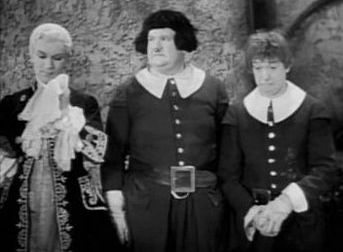 Arguably Laurel and Hardy's most sophisticated movie, Fra Diavolo is perhaps best watched as a film in its own right that showcases Laurel and Hardy, rather than a Laurel and Hardy film per se. While the two feature prominently in Charles Rogers-helmed sequences (with a reputed 27 minutes of Hal Roach-filmed subplots not involving the boys removed after previews) they're part of a greater whole here. Written throughout January and shot from February to March, the film was based upon Daniel Auber's 1830 comic opera and adapted by Jeanie MacPherson for the screen. With the marketing board believing that the American public wouldn't be aware of the opera the title was changed in its home country to 'The Devil's Brother'. To complicate matters further, some later reissues changed the title to 'Bogus Bandits' and 'The Virtuous Tramps', focussing on the involvement of Stan and Ollie. Whereas later films featuring extensive subplots and more realistic co-characters can be viewed as Laurel and Hardy being pushed out of their own films, here those guest actors perform as a compliment to the two stars, perhaps aided by James Finlayson in a small role. What is most striking is Dennis King's dual performance as Fra Diavolo/Marquis de San Marco. Born Dennis Pratt in Coventry, England, in 1897, King had emigrated in 1921 and was a Broadway star and Shakespearean actor. Although he plays the titular character 'straight', his onscreen presence, singing voice, and - most importantly - chemistry with Stan and Ollie is something to behold. With Stan and Ollie attempting to become bandits after having their life savings stolen, they become embroiled in Fra Diavolo's plans, being forced to help his villainy in return for their own lives. With the 18th century setting then much of the humour is bloodthirsty, with references to hanging, boiling oil and throats being slit. However, this is given a typical Stan and Ollie spin, with only Hardy a man pompous enough to claim 'you're wasting my time' to a procrastinating hangman. Lighter humour is provided by drunken scenes, and also 'earsey kneesie nosey' and the 'finger wiggle', two childhood games that Stan had been reminded of during his recent trip back to England. With the depression, the growing costs of production and the demand from audiences to see full-length pictures, Laurel and Hardy would be pushed further towards feature status, where they could be the headlining stars, not just support. Although the US Box office was down from their first two features, the foreign box office on Fra Diavolo was extremely healthy, making it their most profitable film to that date, making more than Pardon Us and Pack Up Your Troubles combined. Before the year was out they had filmed another feature, and by 1935 the shorts were phased out altogether. In 1970 Hal Roach noted to Anthony Slide that the need for other characters and situations to bulk out the features was intentional to help the comedy breathe: 'you didn't have to go on for an hour and a half just doing funny things. You just can't be funny that long.' Although both stars had their reservations about appearing out of their trademark derbies and performing something more 'high brow', by August 1957 Stan wrote of Fra Diavolo that he 'thought it was one of our best films'.     (March 1933, 20m) Director: Charles Rogers and Lloyd French Released: MGM, April 22, 1933 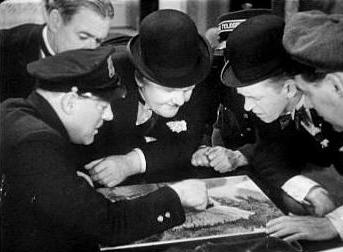 A punning title on the previous year's Spencer Tracy comedy Me and my Gal, this return to the two-reel format presents the audience with a one joke idea: Hardy is due to be married, but before he can set off for the church everyone involved in the wedding becomes engrossed in Stan's jigsaw puzzle. How amusing such a film is falls entirely to the viewer: the sustained narrative, climaxing in an amusingly OTT fight sequence might delight, yet to others it may drag appallingly. Often Laurel and Hardy would develop a 'comedy of irritation', whereby the repetition and exasperating stupidity of the two leads would produce amusement... Me and My Pal is perhaps the finest example of this form. The film ends with Ollie having lost $2 million on the stock market, with Stan's 'Don't worry... prosperity's just around the corner' oddly poignant, a reflection of hope for the watching cinemagoers who were shortly due to experience a resurgence from the Depression during 1933. However, the recovery was relatively short-lived: in 1937 America was plunged into a second recession, one from which it only managed to fully break out of with the onset of World War II. The final fade out with Stan discovering the final missing piece and Hardy chasing him out of the house was different to originally planned. The script for the short had Stan handing Hardy the final piece and Hardy contentedly completing the puzzle at last... only for Stan to accidentally destroy it. However, due to overruns on Fra Diavolo the film wasn't completed as intended, leaving a marginally unsatisfactory ending with Ollie throwing the pieces up in the air at desperation of Stan's continued interest in the puzzle.    (June/July 1933, 20m) Director: Lloyd French Released: MGM, August 3, 1933 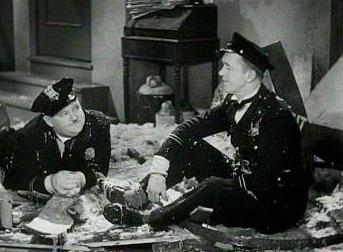 The Midnight Patrol marks the return of Lloyd French to the Laurel and Hardy director's chair after his previous outing on the silent That's My Wife. Although French did uncredited directorial duties on Pack Up Your Troubles, Scram! and Me and My Pal and he had also been assistant director on ten silents, this was French's real chance to shine, helming every short up to and including Oliver The Eighth. French's sense of creativity is felt from the opening credits, which feature a car windscreen wiper wiping away each credit before emerging into the film itself. It's a small level of innovation that doesn't dissipate throughout the short, with a series of inspired sight gags and situations surrounding Stan and Ollie as the world's most inept policemen. Highlights include the surrealism of police HQ calling Stan and Ollie's car to alert them to their own spare tyre being stolen, and Hardy's desperate 'do something to help me!' being exclaimed underwater. After accidentally arresting their own police chief, things get even worse for the duo, as in a macabre ending they die (offscreen) for the first time in a Laurel and Hardy film, being shot at point blank range for their ineptitude.     (July 1933, 19m) Director: Lloyd French Released: MGM, October 7, 1933 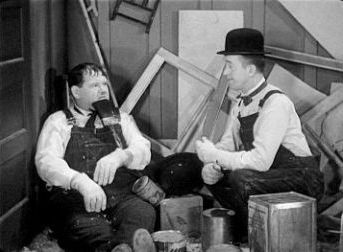 Innovation with title sequences continues here, as Busy Bodies begins and ends with a buzz saw spraying sawdust all over the screen. It introduces us to a work that's almost a throwback to the silent era, the use of sound effects taking precedence over dialogue, and Stan uttering only seven lines. That such a simple premise - Laurel and Hardy are bungling carpenters at a saw mill - can produce such a constant range of situations is testament to the team's comic instinct. Of particular note is Stan changing an old 78rpm record... for the replacement to place the exact same tune; and the use of split screen to achieve the collapsing car effect at the climax. I've never had much to say about this particular shot, but suffice it to say it's probably my favourite. Stan's fight with Charlie Hall in particular is hilarious, and it's, for me, up there with the likes of Liberty, Below Zero and Their First Mistake as a real stand out.      (July/August 1933, 19m) Director: Lloyd French Released: MGM, November 25, 1933 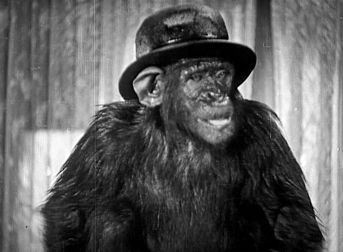 In essence, more of the same, as another inventive opening sequence (the credits and first scene as shot through a glass vial) give way to a knockabout routine with Stan and Ollie as inept chimney sweeps. However, the whole thing is enlivened by some of Stan's obsession with the uncanny and the macabre, as a meeting with a mad scientist and his elixir of youth sees Hardy evolutionary de-aged, emerging as a lip-synching chimpanzee. Universal pictures had been delighting audiences with horror adaptations since 1921, so it seems likely that Stan and Ollie wanted to pay tribute to the genre. Even in 1933 Laurel and Hardy were still at the birth of cinema, relatively speaking, and technical errors can be glimpsed in most, if not all, of their pictures. However, the final scenes of Dirty Work show a myriad of continuity errors, with the position of the Professor and his glasses constantly changing, as well as the 180 degree line rule being completely shattered when Stan and Ollie go to their right to pick up a fish that's earlier shown on their left. Such refinements were clearly still being worked out as people in the industry were developing their craft. Amusing and pacy, Dirty Work does show slight signs that all involved had one eye on the fourth feature film rather than both eyes on Dirty Work itself.     (August 1933, 20m) Director: Robert McGowan Released: MGM, 28th October, 1933 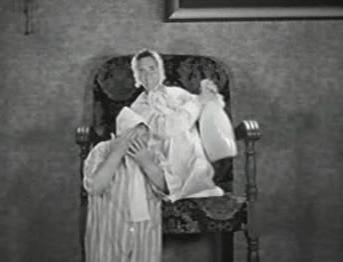 The Our Gang series was first thought up by Hal Roach in 1921, where he called the series 'Hal Roach's Rascals'. However, the Our Gang title became the more popular of the two official titles, eventually becoming the sole title in 1932. Devised by Roach as a film series where children would behave naturalistically, the first film was shot in 1922 and the series was so successful it continued the transition through to sound. By the time Our Gang had been discontinued in 1944 there had been 220 shorts and a feature film made of the concept. Wild Poses, the 125th film in the series, concerns effeminate photographer Otto Phocus (Franklin Pangborn) attempting to take gang member 'Spanky's' picture with little success. George McFarland's performance as 'Spanky' is even more extraordinary given that he was still shy of fifth birthday when performing in the movie. In all this Stan and Ollie appear in cameo for just ten seconds of screentime, taking their Brats personas to the extreme by appearing as squabbling babies, complete with bottles and bonnets.    (March 1933-March 1934, 70m) Director: None Credited Released: MGM, May 24, 1934 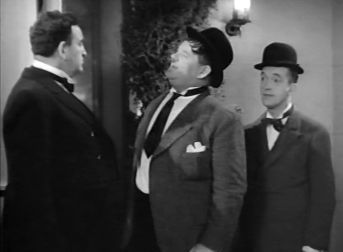 Hollywood Party perhaps couldn't hope to live up to expectations when a 1933 press release announced it would feature the likes of Clark Gable, Joan Crawford, Wallace Beery, Jean Harlow and Buster Keaton. Crawford was alleged to have filmed a cut musical number, but in the end event none of the touted star names appeared and what was left was a comedy musical headlined by Jimmy Durante. To modern audiences then Durante is probably most famous for sounding just like Spike the dog in Tom and Jerry (the voice was modelled on Durante's, of course) and the rest of the main cast are probably most famous for... well... it's not exactly the stellar line-up that was promised, let's put it that way. A form of sequel to 1933's Meet The Baron, whereby Durante again acted alongside Jack Pearl in the guise of 'Baron Munchausen' and the Three Stooges, as here, had a cameo spot. Having not seen Meet The Baron I cannot confirm whether or not they're wasted, as they are here in Hollywood Party. Altogether the gestation period for the film was huge, taking over a year to shoot and a production so troubled that no director would take Shot in black and white, though with Mickey Mouse introducing a short Technicolor cartoon, the film's actually not awful, but just nothing outstanding on any level. 'Run of the mill' was invented for a film like this, and with its 1930s ethos you might cringe a little at African tribal dancers with bones through their noses, a woman being forcibly pinned down and kissed against her will, or the many remarks about Durante's Roman nose... even Mickey Mouse disses the schnozz. Yet sit through this film till around the fifty minute mark and Laurel and Hardy put in a cameo appearance. They steal the film so badly that they received top billing, despite appearing onscreen for less than eight minutes. What's worse is that, while funny, their two routines are actually average at best for Stan and Ollie, making you wonder what a firing-on-all-cylinders L & H would have done to the picture. The first scene sees them trying to enter the party, only to be met with violence by a butler. The second one features one of their rudest routines as Hardy uses facial expressions to illustrate the effects of Lupe Velez smashing an egg down the front of his pants. The cameo was shot by George Stevens in a quick loan from the Roach studios during September 1933, and the brevity of the shoot was in direct contrast to the laboured work on the rest of it. The film overall is actually on the verge of mediocrity, so I'd almost considered giving it average marks, but I'm just not feeling that kind to it. Worth a look as a curio for Laurel and Hardy fans, though you'd perhaps be better off just searching YouTube to see if the Stan and Ollie segments are on there rather than sitting through the whole thing.   (July-October 1933, 68m) Director: William A. Seiter Released: MGM, December 29, 1933 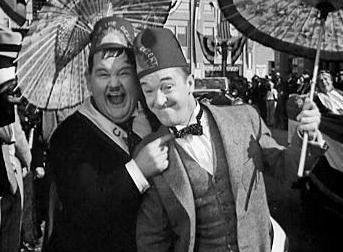 Written from July through to September and filmed in October, Sons of the Desert marked mixed fortunes in the lives of its stars. Though press at the time were reporting a reconciliation between Hardy and his second wife, Stan, despite a reconciliation in August, was now finally getting divorced from Lois, giving her custody of their child and the titles to his home. Sons Of The Desert was released exactly five years after We Faw Down, the silent that was the basis for the film. Here two reels are expanded to eight, and with Stan and Ollie members of a fraternal lodge they become atypical reactive foils to much of the comedy, rather than central instigators. These aren't too na�ve men-childs doing their own thing, they're two mentally challenged grown men attempting to fit in with society. The real appeal of Sons of the Desert lies in the fact that it's 'pure' Laurel and Hardy, by all intents and purposes a short extended to feature length, rather than them being support in their own feature. Yet as a 'classic' Laurel and Hardy feature, I've always found it a little mediocre and not that special. Made under the working title 'Fraternally Yours' and released under that name in Britain, Sons of the Desert famously went on to inspire the name and concept of the Laurel and Hardy Appreciation Society. Founded by John McCabe with Orson Bean, Al Kilgore, Chuck McCann and John Municino in 1965, the society was approved by Stan and still runs to this day.    (December 1933/January 1934, 27m) Director: Lloyd French Released: MGM, 13 January 1934 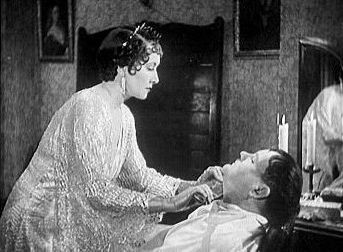 Filming of Oliver The Eighth was temporarily disrupted when Stan's younger brother Edward 'Teddy' Everett Jefferson died of a heart attack while under laughing gas in a dentist's chair. Aged just 33 when he died on the 17th of December, 'Teddy' was one of four siblings for Stan. Eldest brother Gordon George Jefferson was born in 1885, followed by a sister, Beatrice Olga (1894) and another brother, Sydney Everitt (1899). Sadly Sydney lived less than five months, another tragedy in Stan's family. The short became Laurel and Hardy's seventh and final three-reeler (not counting the discarded experiments with the form for Laughing Gravy and Any Old Port!) and was a direct reworking of The Laurel-Hardy Murder Case, complete with bookending dream sequence. Although in their final year of making shorts doing a remake seems to show a lack of genuine inspiration, there are some nice gags in the picture, making it more of a novelty than its forebear. An amusing routine reprised from Pack Up Your Troubles sees Stan leave his barber's shop for a shave, whereas in the earlier feature the boys had closed their food van in order to go to lunch. More original still is Stan selling all they own for a painted house brick with the words 'solid gold' written on it, along with a bag of his beloved nuts. Like The Laurel-Hardy Murder Case, the film's pace drags at times under the extended runtime, yet its more adult concerns means that it stands up better than its forebear. Perhaps the major sticking point of Oliver The Eighth is that, finding themselves trapped in a house with two mentally deranged occupants, one homicidal, Stan and Ollie become the audience identification figures. Although in watching Laurel and Hardy movies the viewers are meant to feel that the two stars are their friends, it's always their continual disruption of accepted norms that generates the laughs. Here their co-stars are the 'other', Stan and Ollie the two 'normal' characters there only to react. It's a strange take on their humour, and one which, while likeable, perhaps never quite 'takes'.   
|
||||||||||||||||||||||||||||||||||||||||||||||||||||||||||||||||||||||||